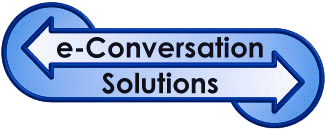About a year ago, I read a piece that noted that a top priority for Chief Marketing Officers was “improving the customer journey”. I had not given this much more thought until a few weeks ago, I was discussing some marketing initiatives with a client, and asked the question; “How did the last few companies that made a purchase, decide to choose us.”
So, how do companies decide? In the B2B world, what is the decision process in a complex sale? Here are some questions to ask.
What problem do you solve?
When answering this question, imagine yourself as a buyer. As a realtor selling a house, in the end you are providing a place to live. But for different buyers, you could be selling comfort, status, education, convenience etc. In today’s world of personalization, the buyer is focused their need. It is important to think past the initial question. A banker once noted that the first question people often ask is about rates, but he said what the prospect is looking for is someone to help in growing their business.
Rethinking your competition can also help you better understand the problem. When the CEO of McDonald’s was asked a few years ago about competition, he noted that he needs to offer a better choice than the grocery store. In this situation, the customer journey starts with the weekend shopping list, as opposed to the evening need for dinner.
When creating content for this stage of the customer journey rather than thinking of features and benefits, consider problems and solutions. Explore the last few purchases. Don’t ask what was purchased, but ask why?
How did the buyer find out about you?
As we move to the online world, there is a thought that everyone wakes up in the morning with a problem or need, searches the internet, finds a solution and makes a purchase. Looking for a health club? Maybe you’ll search, but more likely, you’ll see something driving by. In many B2B situations, referrals or participation in industry or trade associations are the first step to awareness.
Often gentle competitive awareness is the key to visibility. Use newsletters and social media to remind your prospects and customers of what you do and the problems your business solves. Remember, you can’t sell anyone, they buy from you. So, you have to be visible when they need you.
How does the buyer learn more?
Learning is not burying your prospect in information. Education is aligning solution oriented content to the problem. In this step of the journey, the internet and key words become important. Understand what the buyer is looking for. This step is a great place for a blog, white paper, webinar or presentation. Focus content pieces on problems and solutions as opposed to features. It’s not about what your product does, but how it helps.
Overcome objections!
Why your solution as opposed to others? Here is the place to deploy your online chat, personal sales, testimonials and experts. In technical sales, it’s when you want to align your sales engineer with the expert at the customer. What other tools can you think of?
Consideration is the step where it pays to really understand the decision process. Who are the stakeholders, technical buyers, purchasing agents and most importantly the decision maker? But remember, each one of these individuals as a problem to be solved and it is unlikely to be the same one. Solve them all, and you’ll get the sale.
Close the sale
Ask for the order too soon and you’ll create an uncomfortable situation. Wait too long and the purchase order will go to someone else. Look for alignment between the stake holders. A selling expert once proposed to me, that this is the step to try to talk the prospect out of buying from you. If they are convinced, they will close the sale on their own.
Follow up
For many companies this is the missing step. It is estimated that around half of your sales come from repeat customers. This is likely higher in the B2B world. Your current customers are 9 times more likely to convert than a new customer. How do you communicate with your current customers? Use newsletters, social media and personal events to reach out to them. If you have tracked the problem that you solved for them? What are other issues that are tangential where you can provide a solution?
Some tools you can use are follow up offers and information updates. Bought a new car recently? In addition to the service offers, think about the affinity magazine. It offers insights, but also accessories and new product information. Two car family? Now that you have bought one, how about the other one? Offer insights into solutions for problems that were not initially understood.
So, you are back at the beginning. Think about your last purchase. What was your journey? Explore these points and understand how it can help your business.





